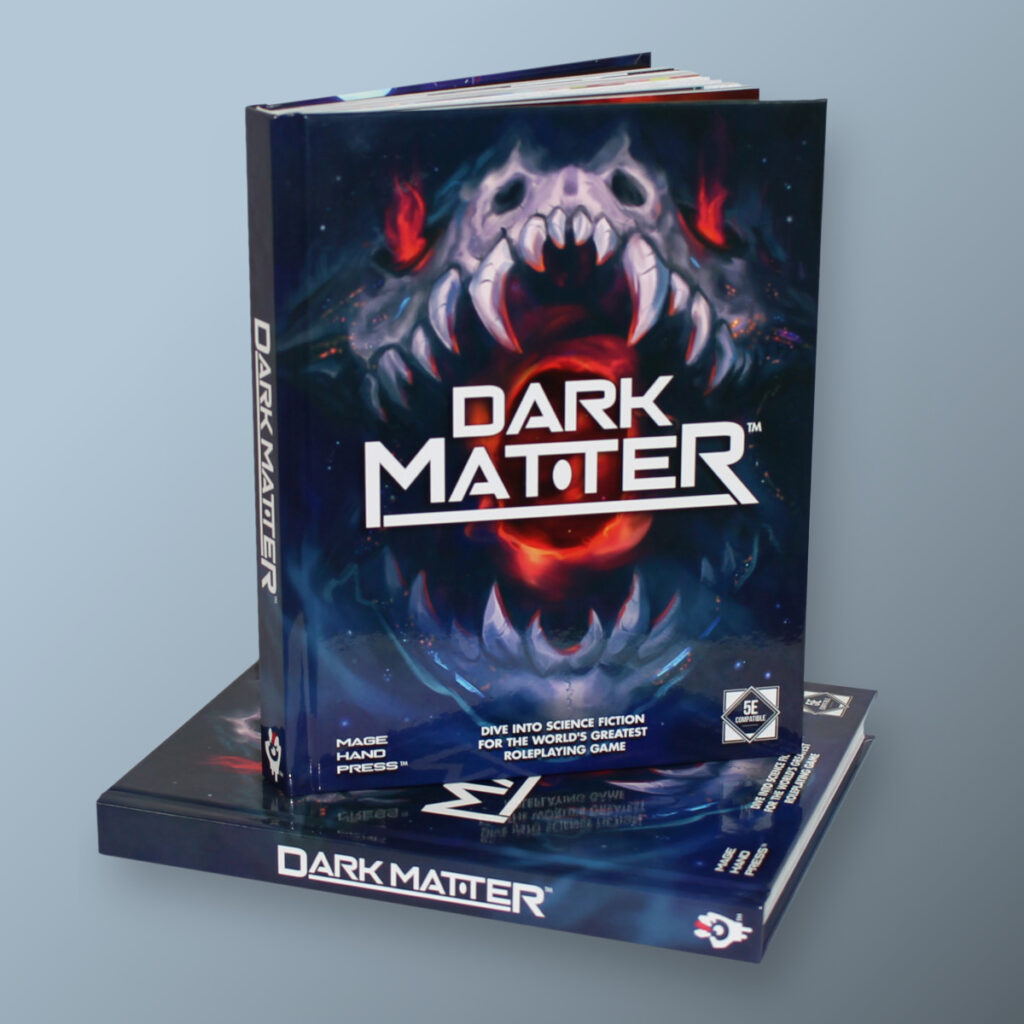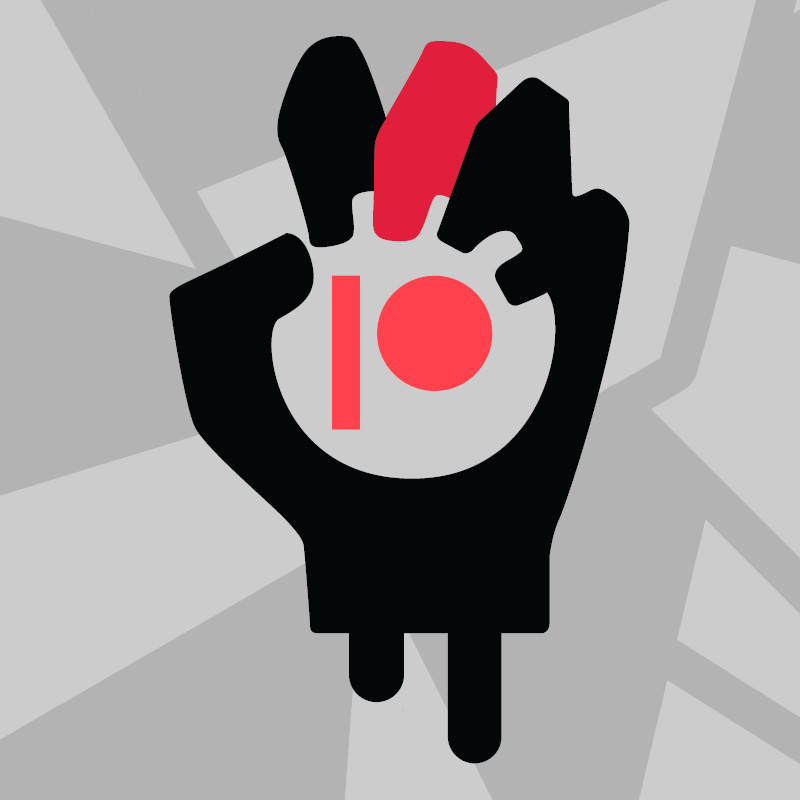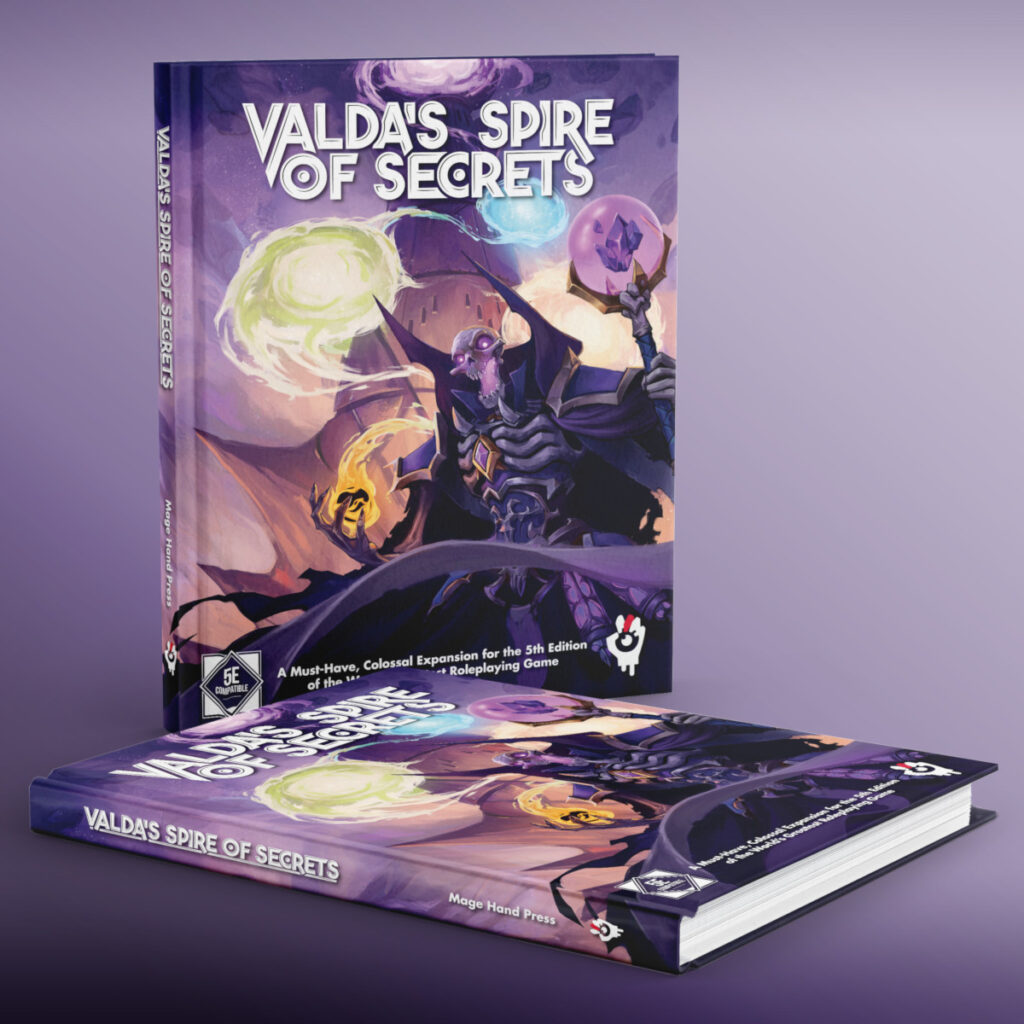I recently designed a standalone horror TTRPG named Blood on the Lens. It’s a magnetically good time with sharp character creation, punchy combat, and some really innovative storytelling systems.
But why did I depart from 5th Edition D&D, Mage Hand Press’s bread and butter?
Over my years of designing games, I’ve gotten very picky with my TTRPGs. Certain facets of the hobby started to test my patience, so I created a mental list: Things I’d Do Better If I Designed It. Over time this list grew into a specifications sheet for a good — maybe even great — roleplaying game. Slowly but surely, I hammered them into a real life game. Here’s that list of specifications and how I implemented them into Blood.
One-Page Rules
Giving a new RPG a shot sometimes means hours of reading over the rulebook (or books) and then summarizing those rules for a group of tired adults who have already had at least one beer each. So I knew that the perfect RPG should have no more than one page of core rules. And because I’ve experimented with writing one-page RGPs, I knew this could be done if I designed a game from the start to prioritize economy of space and design.
And indeed! The Blood on the Lens rules reference sheet is sort of a quiet triumph. In playtesting, players never had to look at the core rulebook and they etched the rules into their minds after a session or two. There’s an elegance to how things work and how satisfying they are to learn.
The Hook
I don’t care how good an RPG is — it needs a hook. Imitators of D&D and Call of Cthulhu have long saturated the market, but still constantly forgo reasons why they should be played instead of their forebears. Put another way: why shouldn’t I play something else?
Blood on the Lens has a very simple hook. When you take damage, find something on your character sheet and rip it off. Nothing is written in pencil; everything is inked or destroyed. You’re in a horror movie. Sacrifices are necessary to survive.

With that in mind, the character sheets have even more constraints than normal: they have to be one page only, include everything you need, and allow you to remove parts from them mid-game. It’s a good thing, then, that the sheets in Blood are spectacular.
Designed Character Sheets
Character sheets are the most critical aspect of a great roleplaying game. Why is it that so many have absolutely terrible sheets? A character sheet is the interface by which players learn and interact with the game, so it should be the recipient of as much design as the game system itself.
By my reckoning, a great character sheet should:
- Teach you how to use it
- Act as a repository for everything you should know about your stats and rules
- Allow you to make a character quickly
- Provide ample customization
Blood takes the idea of a character sheet further than most games dare. The game comes with 21 character sheets, each tied to a specific class or Archetype. Each one includes a section that walks you through making a character for the first time, tells you how to level up, and prints all of your class’s features. They also pose background-building questions to flesh out your history and motivations.
By the time you finish, you have a fully fleshed-out character that runs circles around an elven ranger.
The Blue Shell
Failure sucks. It’s a part of gaming, and Blood on the Lens embraces failure in a whole new way. So how do we prevent a bad run of dice from ruining someone’s day, from destroying their character completely?
As mentioned, it’s easy to learn Blood on the Lens, but as a quick summary: when you attempt an Action, you roll one or more d6s. If you get a 5 or 6 on any die, congratulations: you succeed! If you didn’t, you failed. Not to worry, though: you get to mark Adrenaline, filling in half a box on your character sheet. Whenever you might fail another roll, you can expend your Adrenaline (filling in the other half of the box) to reroll all of the dice and add a bonus die. The worse your luck, the more Adrenaline you gain, and the better you’ll be in the future.
I call this a Blue Shell mechanic after the Mario Kart item that helps straggling players catch up with everyone else. This single Blue Shell helps keep everyone having fun around the table, even when things seem dire.
Dynamic Twists
A good RPG isn’t a simulation or a miniatures game: it’s a storytelling machine. Its mechanics should implore players to invest in their characters and push the plot forward, and they should inject drama and tension as the game progresses. Blood on the Lens does just that.
When you roll doubles — two of the same number — the result is a Twist. It’s still a success or failure, but something unexpected also happens. Every player around the table gets to suggest what happens next, and the GM gets to pick their favorite result. Suddenly, it’s a game of oneupmanship that asks everyone to take the reins for a moment and craft the narrative alongside the GM. And it ensures that, every few minutes, something unexpected shakes up the story. It keeps the whole game improvisational and immediate, with an energy that you should feel for yourself.
Players also get their own secret story objectives called Beat cards that they need to accomplish throughout the adventure. For brevity, I’ll point you to the Insomnia Storytelling Engine and let you explore.
Story Building Blocks
TTRPG sessions exist on a spectrum from rigidly railroaded to chaotically improvised. Everyone has their preferences, but most say that a hybrid approach is best. I wanted Blood on the Lens to hand you the keys to a veteran GMing playbook so you can be making the best story possible with minimum effort.
So the vast majority of Blood on the Lens, as a book, is arranged as a series of building blocks for your story. It comes with three settings: Nowhere, USA, a rotting western town, Grismoor, a crumbling and cursed medieval metropolis, and Blackpost, a Dark Matter sci-fi colony on the edge of space. Pick whichever you like, or make your own!

Each setting comes with locations, NPCs, and factions. How much of it do you need to use? None. Introduce locations as they become relevant. Drag-and-drop NPCs when you need somebody in a scene. Throw factions at the players when you need to tie things together. It’s up to you, the whims of the players, and the tides of the narrative.
Monsters are structured the same way. Each monster comes with a story arranged loosely enough that it works with every setting and allows you to adapt to the players’ demands. They’re dangerous, mysterious, and terrifying, but they’re also rubbery. You can bend them into your story any way you choose. Oh, and they’re easy to run, never even asking you to roll dice unless you want to.

Don’t Take My Word For It
Obviously, I’m biased. I designed Blood on the Lens to be my ideal roleplaying game and my ten or so players having a blast could have been a fluke. But maybe you’ll like it too — maybe it’ll be your new favorite.
It’s free to play, and I even made a free website to make it easy to learn on the go. You’ve got nothing to lose, apart from a session you could otherwise spend playing D&D. But I think that’s a risk worth taking.




